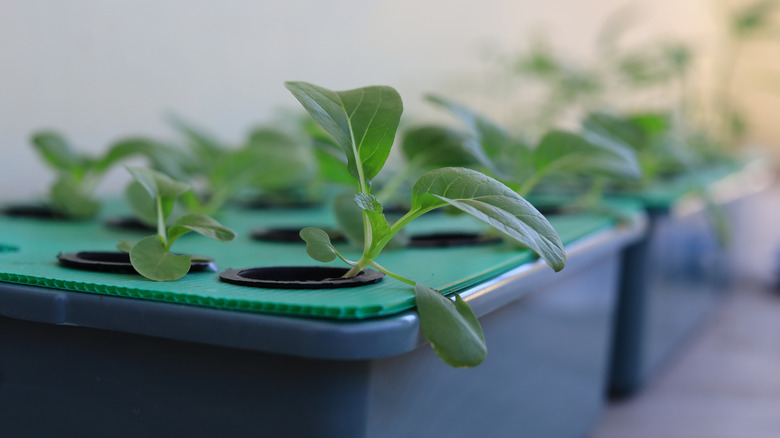Make A Modern Self-Watering Plant Pot With An IKEA Hack
If you've ever walked in the rain with your shoelaces untied, then you know that even if you don't immerse the rest of your foot in the rainwater, somehow, your shoe winds up wet, anyway. This, plant lovers, is the magic of wicking in action. Once you learn how it works, you can tap the principle and a few IKEA OMBONAD bowls to make a watering system that will wet your plants as surely as the rainwater wet your shoes.
Wicking is a simple watering technique that promotes plant growth. The basic set-up for it requires a length of rope, twine, or even shoelaces. The rope is buried near the roots of your plants and then dipped into a water source — a bowl, bottle, or jug. Eventually, the roots of the plants suck up the water via capillary flow, allowing them to drink through their cloth straw at a steady pace. The watering system should work for up to a couple of weeks, which could mean no plant-sitter for you during your vacation.
To use this system with IKEA bowls, one will provide a home for the plants. The other will act as a reservoir for the water. One of the bowls needs to have a hole drilled in the bottom of it to turn it into a planter. This allows for drainage and also gives you a place to wet the wick.
How to set up an IKEA wicking system for your plants
If you love the sleek, even design of the IKEA OMBONAD bowls, this plant DIY gives you an opportunity to use them beyond the dinner table. Because the bowls are basically short, flat cylinders, you're able to stack them on top of each other. Depending on your design sensibilities, this self-watering system can look something like two OMBONAD bowls stacked on top of each other. Or you can mix-and-match the look by putting an OMBONAD bowl on the bottom to function as your watering system and another kind of deeper, more fluted bowl, like a NÄTBARB bowl, on the top.
Once you choose which bowl you'll use for your plants, drill a hole in it. Since you don't want to have to glue broken ceramic pieces back together, you need to prevent the drill jumping around on the bowl. To do this, place two pieces of tape in the shape of an "X" the middle of where you'll drill. A diamond- or carbide-tipped drill bit works best for this. After you finish drilling the hole, take two pieces of rope and tie them in a knot at the top. The tentacles of the knot are pushed through the hole and then the plants and placed on top of it.
Fill the second bowl with water. This one should be one of the flat bowls. Place the planter bowl over the water bowl, ensuring that the ends of the strings fall into the water so that they can dampen the rope. Refill the water as needed to keep your plants watered.
